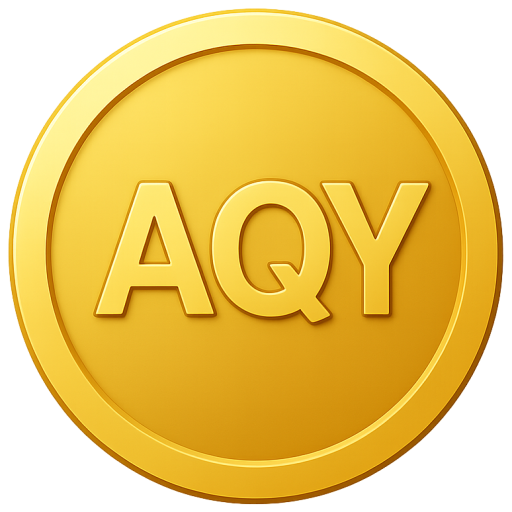Window of opportunity
The Coordination-Economy Era is emerging. The Web3 world is currently at the intersection of two phases:
- Phase 1: The chain is a tool, the infrastructure of DeFi
- Phase 2: The chain is a collaborative protocol, the consensus system for DAOs, commerce, production, and payments
AQY’s goal is not to achieve extreme speed, but to make value collaboration a pre-defined capability. This is a brand new category and an uncontested market:
- 🌍 Allows cross-application, cross-organization, and cross-business role sharing of the same currency, node, and consensus logic.
- 🔗 Enables seamless integration of DeFi, payments, DAOs, AI, and e-commerce on the same chain.
- 🧠 Allows for the spontaneous flow of value and incentive distribution on the chain, as natural as air.

AQY Technical Architecture
AQY Blockchain utilizes a seven-layer full-stack design, fully unifying everything from underlying consensus to application tools. This solves the problem of traditional chains providing only an execution layer but lacking integrated supporting capabilities.
This not only allows developers to build applications like building blocks, but also enables “native on-chain integration” for user experience, asset circulation, and governance participation.
Public Chain Layer | Layer 1 Chain
A high-performance Layer 1 architecture supports dynamic sharding and a modular consensus algorithm, achieving both scalability and node decentralization.
Execution Layer | Execution Layer
A secure virtual machine developed in the Move language, compatible with the EVM/Sui ecosystem, supports resource-oriented logic and secure sandbox isolation.
Storage Layer
A built-in on-chain key-value storage structure centrally manages account assets, NFTs, and smart contract status, ensuring both scalability and efficient querying.
Network Layer
Utilizes an improved P2P transmission protocol, supporting regional node caching, global intelligent routing, automatic node discovery, and dynamic load balancing.
Application Layer
Provides standardized modules such as wallets, DEXs, F2C merchant systems, NFT marketplaces, DAO tools, and an on-chain payment SDK.
MEV Control Layer
Establishes a fair ordering market and priority transaction pool to proactively combat front-running, arbitrage abuse, and order manipulation.
Developer Toolkit
Includes a CLI tool, a simulated test chain, a smart contract IDE, a contract analyzer, and a front-end component library to support rapid development and on-chain testing.

AQY Core Innovation Breakthroughs
AQY Blockchain is not a traditional L1 public chain, but rather a sovereign-grade infrastructure tailored for the “collaborative economy” and “chain-based business model.” Its core design focuses on two principles: commercial usability and decentralized collaborative governance. It also proposes innovative solutions to seven major technical bottlenecks of current mainstream public chains.
Supporting the Real Economy and RWA on-chain
Real World Asset Compatibility AQY natively supports RWA (Tokenized Real World Assets) scenarios, including physical assets such as real estate, equity, and stores. These assets can be directly on-chain and enter the F2C blockchain business model, achieving efficient integration of Web3 and the real economy.

What Our Customers Say

Web2-Grade User Experience
Web2-Grade UX for Web3 Apps Users can access the Web3 ecosystem as naturally and seamlessly as using Gmail without switching chains, installing plugins, or learning new knowledge. This truly brings Web3 technology into the mainstream consumer market.

Native Full-Stack Integration
Full-Stack Native Integration From the consensus layer to the underlying modules, all in-house developed, including wallet, payment, DEX, NFT, and DAO tools, is fully functional out-of-the-box, eliminating the need for developers to rely on third-party components. This significantly lowers the technical barrier to entry and accelerates application adoption.

Flagship Application: F2
The F2C wallet features built-in “Quick Pass” and “Regional Payment Express” technologies, allowing users to pay and receive instantly with a simple QR code scan, with funds arriving in seconds, a user experience comparable to modern payment tools like WeChat and Alipay. This design, based on AQY’s efficient consensus and node optimization strategy, represents a significant innovation and breakthrough in payment scenarios.
AQY Coin + USDC Dual-Layer Value Loop: USDC for Payment, AQY Coin for Rewards
The F2C ecosystem uses USDC (stablecoin) as a payment medium to ensure the stability of fiat currency value; it also uses AQY Coin as a value incentive token to achieve commercial fiat.
The transaction process is as follows:
1. User pays (USDC) for consumption
2. Merchant receives USDC, and the platform automatically rewards AQY Coin to the user and the referring node.
3. The AQY Coin earned by the user can be used again on the platform, upgraded, or resold.
4. Users and merchants hold AQY Coin, participating in ecosystem governance and receiving dividends.

Latest News
We believe in long-term development
🌐 Seeking talents: 🧠 A. | Chief Protocol Architect 📈 B. | Ecosystem Expansion Lead 🔐 C. | General Counsel 🤖 D. | Onchain Identity & Agent Lead
Summarize
The significances of AQY
- One chain, one token, universal across the entire chain: All value is no longer fragmented, and incentives and governance operate in a unified manner.
- Value is consensus, contribution is asset: Every action earns visible rewards, and every participant possesses capital.
- The chain is civilization, not just technology: AQY is a public chain experiment in decentralized business order.

